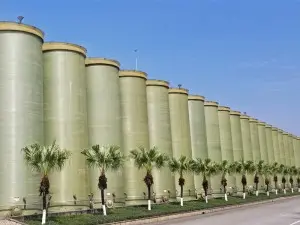
-
 Afrikaans
Afrikaans -
 Albanian
Albanian -
 Amharic
Amharic -
 Arabic
Arabic -
 Armenian
Armenian -
 Azerbaijani
Azerbaijani -
 Basque
Basque -
 Belarusian
Belarusian -
 Bengali
Bengali -
 Bosnian
Bosnian -
 Bulgarian
Bulgarian -
 Catalan
Catalan -
 Cebuano
Cebuano -
 China
China -
 China (Taiwan)
China (Taiwan) -
 Corsican
Corsican -
 Croatian
Croatian -
 Czech
Czech -
 Danish
Danish -
 Dutch
Dutch -
 English
English -
 Esperanto
Esperanto -
 Estonian
Estonian -
 Finnish
Finnish -
 French
French -
 Frisian
Frisian -
 Galician
Galician -
 Georgian
Georgian -
 German
German -
 Greek
Greek -
 Gujarati
Gujarati -
 Haitian Creole
Haitian Creole -
 hausa
hausa -
 hawaiian
hawaiian -
 Hebrew
Hebrew -
 Hindi
Hindi -
 Miao
Miao -
 Hungarian
Hungarian -
 Icelandic
Icelandic -
 igbo
igbo -
 Indonesian
Indonesian -
 irish
irish -
 Italian
Italian -
 Japanese
Japanese -
 Javanese
Javanese -
 Kannada
Kannada -
 kazakh
kazakh -
 Khmer
Khmer -
 Rwandese
Rwandese -
 Korean
Korean -
 Kurdish
Kurdish -
 Kyrgyz
Kyrgyz -
 Lao
Lao -
 Latin
Latin -
 Latvian
Latvian -
 Lithuanian
Lithuanian -
 Luxembourgish
Luxembourgish -
 Macedonian
Macedonian -
 Malgashi
Malgashi -
 Malay
Malay -
 Malayalam
Malayalam -
 Maltese
Maltese -
 Maori
Maori -
 Marathi
Marathi -
 Mongolian
Mongolian -
 Myanmar
Myanmar -
 Nepali
Nepali -
 Norwegian
Norwegian -
 Norwegian
Norwegian -
 Occitan
Occitan -
 Pashto
Pashto -
 Persian
Persian -
 Polish
Polish -
 Portuguese
Portuguese -
 Punjabi
Punjabi -
 Romanian
Romanian -
 Russian
Russian -
 Samoan
Samoan -
 Scottish Gaelic
Scottish Gaelic -
 Serbian
Serbian -
 Sesotho
Sesotho -
 Shona
Shona -
 Sindhi
Sindhi -
 Sinhala
Sinhala -
 Slovak
Slovak -
 Slovenian
Slovenian -
 Somali
Somali -
 Spanish
Spanish -
 Sundanese
Sundanese -
 Swahili
Swahili -
 Swedish
Swedish -
 Tagalog
Tagalog -
 Tajik
Tajik -
 Tamil
Tamil -
 Tatar
Tatar -
 Telugu
Telugu -
 Thai
Thai -
 Turkish
Turkish -
 Turkmen
Turkmen -
 Ukrainian
Ukrainian -
 Urdu
Urdu -
 Uighur
Uighur -
 Uzbek
Uzbek -
 Vietnamese
Vietnamese -
 Welsh
Welsh -
 Bantu
Bantu -
 Yiddish
Yiddish -
 Yoruba
Yoruba -
 Zulu
Zulu
Exploring the Benefits and Features of FRP Cars in Modern Transportation
The Rise of FRP Cars Revolutionizing the Automotive Industry
In recent years, the automotive industry has witnessed a significant shift towards the use of advanced materials, with Fiber Reinforced Polymer (FRP) emerging as a game-changer. FRP cars, which incorporate this innovative material, are revolutionizing the way vehicles are designed and manufactured. This article explores the benefits and implications of FRP technology in the automotive sector.
FRP is a composite material made of a polymer matrix reinforced with fibers, typically glass or carbon. This combination provides a unique set of properties that make FRP an attractive alternative to traditional materials like steel and aluminum. One of the most notable advantages of FRP is its lightweight nature. Vehicles made with FRP can be substantially lighter than their steel counterparts, leading to enhanced fuel efficiency and improved performance. This is particularly crucial as the automotive industry shifts toward sustainability and reducing carbon emissions.
.
In addition to its practical benefits, FRP presents exciting design possibilities. The material can be molded into complex shapes, allowing designers to create more aerodynamic and aesthetically pleasing vehicles. This flexibility in design not only enhances the vehicle's look but also contributes to improved performance by reducing drag. As the competition in the automotive market heats up, manufacturers are keen to offer innovative designs that stand out to consumers.
frp car

Moreover, the use of FRP aligns well with the growing trend of electric vehicles (EVs). The lightweight nature of FRP can significantly enhance the range of EVs by reducing the overall weight of the vehicle. With battery technology constantly evolving to improve efficiency, pairing it with lightweight materials like FRP presents a powerful combination that can push the boundaries of electric mobility.
However, the adoption of FRP in the automotive industry is not without its challenges. Manufacturing processes for FRP can be more complex and expensive compared to traditional materials. The curing process, which involves hardening the polymer, requires specific conditions and can be time-consuming. Additionally, recycling FRP presents challenges due to its composite nature, leading to concerns about sustainability in the disposal of FRP vehicles.
Despite these hurdles, the future of FRP in the automotive industry looks promising. Major manufacturers have begun to embrace this technology, experimenting with FRP in various components such as body panels, chassis, and even interior elements. As technology advances, the costs associated with FRP production are expected to decrease, making it more accessible to a wider range of manufacturers.
In conclusion, the rise of FRP cars marks a pivotal moment in the evolution of the automotive industry. With their lightweight qualities, resistance to corrosion, and design flexibility, FRP vehicles offer numerous benefits that align with the current demands for sustainability and innovation. While challenges remain, the ongoing development and adoption of FRP technology are set to transform how vehicles are built, driven, and perceived in our society. As we look toward the future, it is clear that FRP will play a crucial role in shaping the next generation of automobiles.









